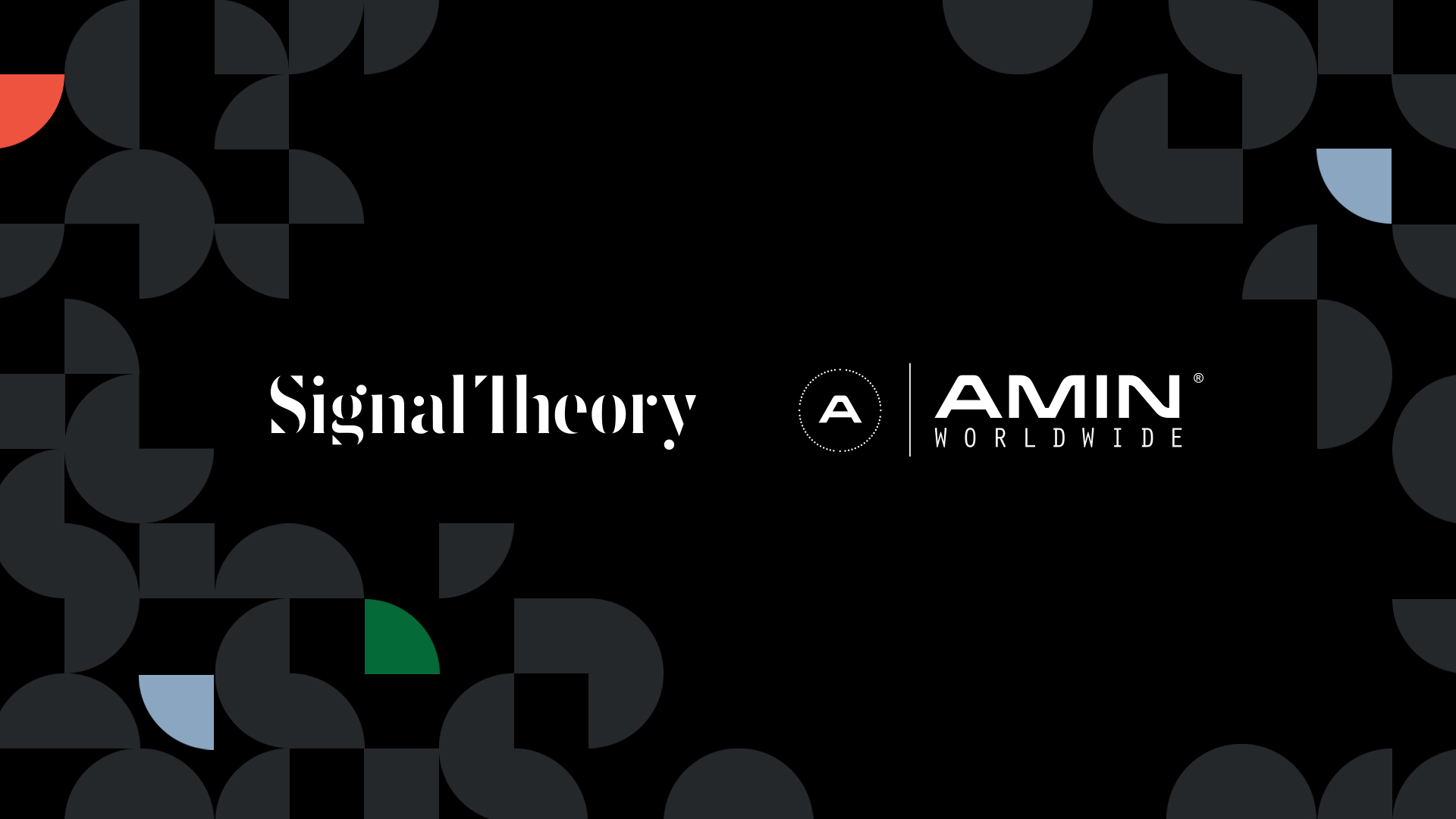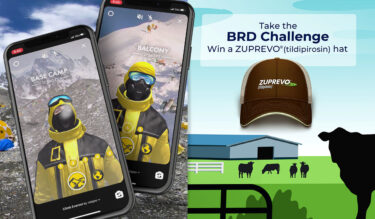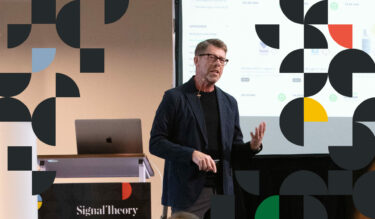The Advertising & Marketing Independent Network (AMIN) Worldwide is an alliance of over 50 independent marketing agencies, packed with award-winning talent and experience. Our very own co-CEO, Ali Mahaffy, is the current President of AMIN Americas. Signal Theory has been a part of this organization since 1984 and have loved every minute of it. We enjoy being part of a network of agencies around the globe that work together and share knowledge and insights.
We asked a few members of our leadership team to share some of their favorite takeaways from this year’s AMIN Worldwide Conference.
The #1 Reason to Read Another Post About Another Creative Director Going to Another Conference
Brent Davidson, Group Creative Director

#1 You might learn something. I certainly did.
I’ll be honest. Conferences aren’t really my thing. I’m usually quite skeptical of the “expert” speakers, the “uniquely curated” content and the “artisan” meats and cheeses that keep guests energized throughout the day.
But let me tell ya. They weren’t lying about those artisan meats and cheeses. One bite of the Espresso Manchego at the 2022 AMIN Worldwide Integrated Conference in Indy had me ready to run through a freakin’ wall.
Ok, so what did I learn?
First, I learned that I have a serious cognitive bias as it relates to conferences. I always assume they’ll be boring. Which isn’t true, because I always leave conferences fired up like an evangelist on Easter Sunday.
In this instance, I couldn’t wait to spread the news of what I had learned from Diana Lucaci, CEO and Co-Founder of True Impact, a company that uses consumer neuroscience research like eye-tracking and biometrics to help predict market behavior.
Advertising is a mix of art and science.
-I think someone said this
Now, I’ve always been a fan of the quote “advertising is a mix of art and science,” but I’d be lying to say that I’ve truly embraced the science part of that equation. The part that is rooted in research, data, biometrics and all the other trigger words that can send creatives completely over the edge.
However, it’s the science part that can help support a creative’s rationale for doing simple, powerful, eye-catching work. You see, the science part believes in white space. It likes simple call-to-actions and short punchy headlines. Let me explain.
Before the conference, Diana asked for us to submit work samples that she would test using eye-tracking research. Then she’d share the results at the conference in order to help us create work that would better resonate with our audience.
Of course, I was a little uncomfortable (self conscious, maybe) to send some work over to be tested by some AI algorithm bot who lacked human emotion, but I decided to be a team player and sent a recent point-of-sales piece we’d done.
To be frank, the results weren’t what I’d hoped for, but the recommendations were. To quote,
“Opportunity to reduce visual content.”
“Reduce # of font types.”
“More emphasis on offer.”
In short, simplify. I couldn’t agree more.
It was a great reminder that, at times, we may lose sight of our objective. As creatives, it’s tempting to use all the tools in our arsenal. To throw everything we have at every piece of communication. I’ve done this more times than I care to admit. But the real test of a great advertiser is knowing when and where to use our tools.
Sorry writers, but an 11-word esoteric headline probably doesn’t belong on a billboard.
No offense to designers, but your icons don’t work on these coupons.
At the end of the day, the most important thing is the consumer. Knowing what we can do to get their attention and drive them to action is our #1 priority.
At Signal Theory, we believe a better understanding of human behavior can drive marketing effectiveness for our clients. Pretty ironic that it took a robot to remind me of that.
Oh, well. At least I learned something. Hope you did, too.
Connecting with Industry Peers
Cheryl Tulipana, Senior Director – Media and Data Insights

A good leader should always be open to listening and learning from others. One of the most valuable things that I get from being part of AMIN and attending the Integrated Conference is to hear the perspectives of my peers. Not only is it great to realize that you’re not alone in your struggles and concerns, but it’s even better to share how we each approach challenges and find new solutions.
These are three of my favorite takeaways from my AMIN media peers at the 2022 Integrated Conference.
On finding talent – Everyone is struggling right now with hiring, but the biggest thing I took away from this conversation is that no matter how desperate you may be for another team member, don’t rush the process. Some agencies have pretty rigorous tests that they give to new media hires to ensure they have the skills to do the job. Others require interviewees to submit previous media work or to demonstrate “hands on keyboard” within Facebook or Google. I also loved that one agency has someone teaching a media course at a local university as a way of building a talent pipeline for years to come. Luckily, at Signal Theory we’ve got a fantastic internal recruiter who knows our culture and helps us to find great candidates.
On in-housing programmatic – I learned that many of my AMIN peers have successfully done it, but that you shouldn’t underestimate the resources and training needed to make this shift. It hasn’t worked out perfectly for everyone and there are others that have made the decision to stay with managed service. Staffing is the most important part. You have to think about who on your team would like this kind of work and be good at it. It can be a high-turnover position which brings some challenges. You also need to have enough programmatic business to make it worthwhile. There are vendors in the space that will help you transition and train your team, but it has to be a decision that is a fit for your firm, your team and your clients. I think there’s a lot of pros to using managed service and I recently had a client validate our decision to do so at Signal Theory, but it is definitely something I’ll keep on my radar.
On analytics – I was happy to hear that, similar to Signal Theory, at most other agencies the media and data insights teams work very closely together or even sit on the same team. Despite that connection, many analysts still wanted to better understand the media plan in order to provide more actionable insights. They want to be included earlier in the process so that they fully understand the business objectives. The ultimate goal for everyone is to be more proactive and consultative with our clients. Every agency is trying to get away from just reporting what happened, but there are hurdles. It takes a lot of time to build reports, data is messy and is made worse when there’s not a good foundational structure in place. I’m thankful that Signal Theory has made great strides in our analytics practice and that we have a strong foundation to continue building upon.
Creativity at 12,000 RPMs
Shaun Crockett, Creative Director, Experience

An indy car engine spins up to 12,000 RPMs without blinking an eye. It makes roughly four times the power of your normal car. It’s no surprise they are fast and that’s exactly why I wanted to ride in one at this year’s global AMIN conference in Indianapolis. But the conference was about more than high-performance sports cars, it was an opportunity for advertising/marketing agencies from around the globe to share their experiences and learn about what the future holds, helping to find answers to questions like:
How do we stay ahead in a world that is moving so quickly?
How do we create connections with our audiences when their attention is pulled in hundreds of directions?
There isn’t a silver bullet, but there are some really smart approaches. This year’s conference embraced the theme of FAST FORWARD and how it could apply to the challenges of creating social content, leveraging A/R for increased sales, and even using machine learning to deliver clearer more connected experiences.
I was super excited about Diana Lucaci’s talk about using AI learning to deliver more connected creative output. She’s the CEO and Co-Founder of True Impact. She was able to break down what goes on behind the scenes in our brains and how to design for it. Diana called it NEURODESIGN – creating materials that visually attract and mentally engage your audience. Our audiences have over 70,000 thoughts a day, how can we ensure we are one of them?
People act on how they feel – not what they say.
-Diana Lucaci CEO, True Impact
That’s where companies like True Impact are bringing value. They are able to track emotions, eye movement, biometrics and then use AI to bring it all together – to inform creative outputs for clearer messaging and deeper connection, and it’s not just for print ads – True Impact is able to apply this to videos, emails and even websites.
It all comes down to the first 1-2 seconds. You have to capture attention AND THEN be relevant. I know it all sounds like advertising 101, but being able to back up – or adjust – your choices with mountains of data can mean the difference between follow-through and being forgotten.
Diana was even able to apply this to real-world work samples from conference attendees. As a creative I know it’s a balance between everyone involved, and it was interesting to see how background imagery, color, and typography were processed to provide insights on how to create better deliverables.
Signal Theory has been locked into behavioral science since day one. Seeing it applied through machine learning to the creative product is empowering. Sure it validates our choice to focus on human science, but it also is very exciting to think about what this technology is paving the way for.
The other speaker that stood out to my tech-loving brain was Michael Cadoux, General Manager at QReal Technologies. He was able to provide some very tangible examples of how augmented reality is affecting our world.
Like how AR models lead to over 250% increase in conversions compared to standard 2D images. If that doesn’t cause you to pause and think about how you can leverage this technology for your company then you need to get out of the way.
78% of consumers who’ve used AR prefer virtual experiences over video content.
– Michael Cadous, GM at QReal
It goes beyond trying on new sunglasses too… it’s about future-proofing your brand for an experience like the metaverse. I’m not entirely sure what the metaverse will become moving forward, but I can tell you the companies with assets built to live in that environment are going to benefit.



